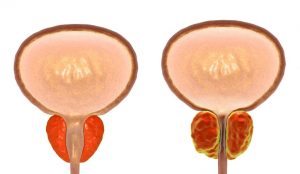 After the age of 50, men run the risk of an enlarged prostate. By the time men are in their mid-60s, 70 percent of them will begin to experience symptoms of an enlarged prostate.
After the age of 50, men run the risk of an enlarged prostate. By the time men are in their mid-60s, 70 percent of them will begin to experience symptoms of an enlarged prostate.
To narrow in on whether or not you have an enlarged prostate, it’s important that you pay attention to any of the following symptoms:
- Frequent need for urination throughout the day and night
- Weak or slow urinary stream
- A sense that you cannot completely empty your bladder
- Difficulty or delay in beginning urination
- Urgency feeling to urinate
- Urinary stream which starts and stops – not a steady flow
Advertisement
Treatment for an enlarged prostate has come a long way, and there are many different options available. Medications may be useful in reducing symptoms but do need to be taken in the long-term to maintain the benefits. Some patients may experience side effects from these medications such as dizziness, erectile dysfunction, and only partial relief.
Surgery may also be an option and include transurethral resection of the prostate (TURP) or photovaporization of the prostate (PVP). These procedures do require an overnight hospital stay and may result in long-term erectile dysfunction, so always speak to your doctor if these surgical options are right for you.
A new breakthrough in surgery has been developed and is minimally invasive. It is known as the Prostatic Urethral Life (PUL) and is done with a device that lifts and moves the enlarged prostate tissue out of the way of the urinary tract to remove the blockage. Tiny implants help hold this tissue away from the urethra and are tied back, similar to that of a curtain.
PUL is a short procedure only taking about an hour and can easily be conducted in a doctor’s office. There may be some minor side effects after the procedure is done but typically resolve in about a month’s time.
Because an enlarged prostate can negatively impact a man’s life, it’s important that you speak to your doctor about what options you have to obtain relief. The first step is to recognize the symptoms, so you can begin the conversation with your doctor.
Also Read:
